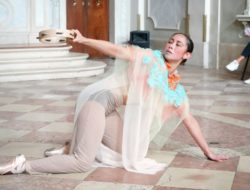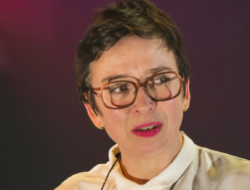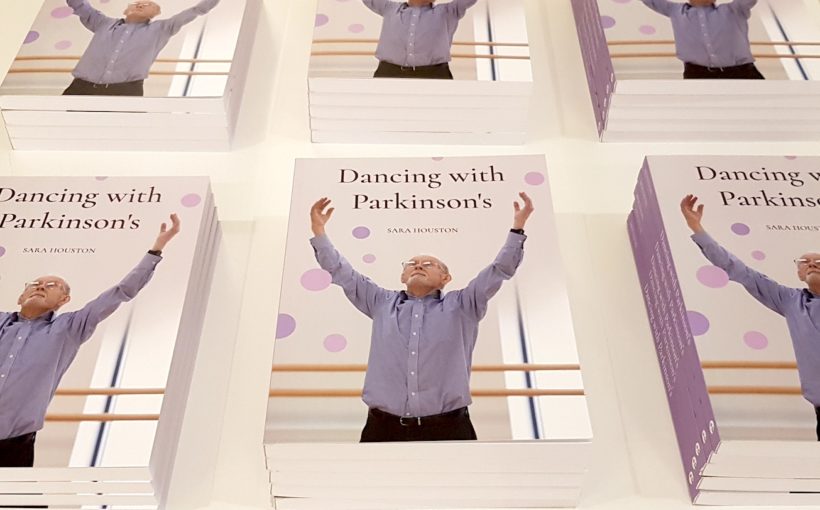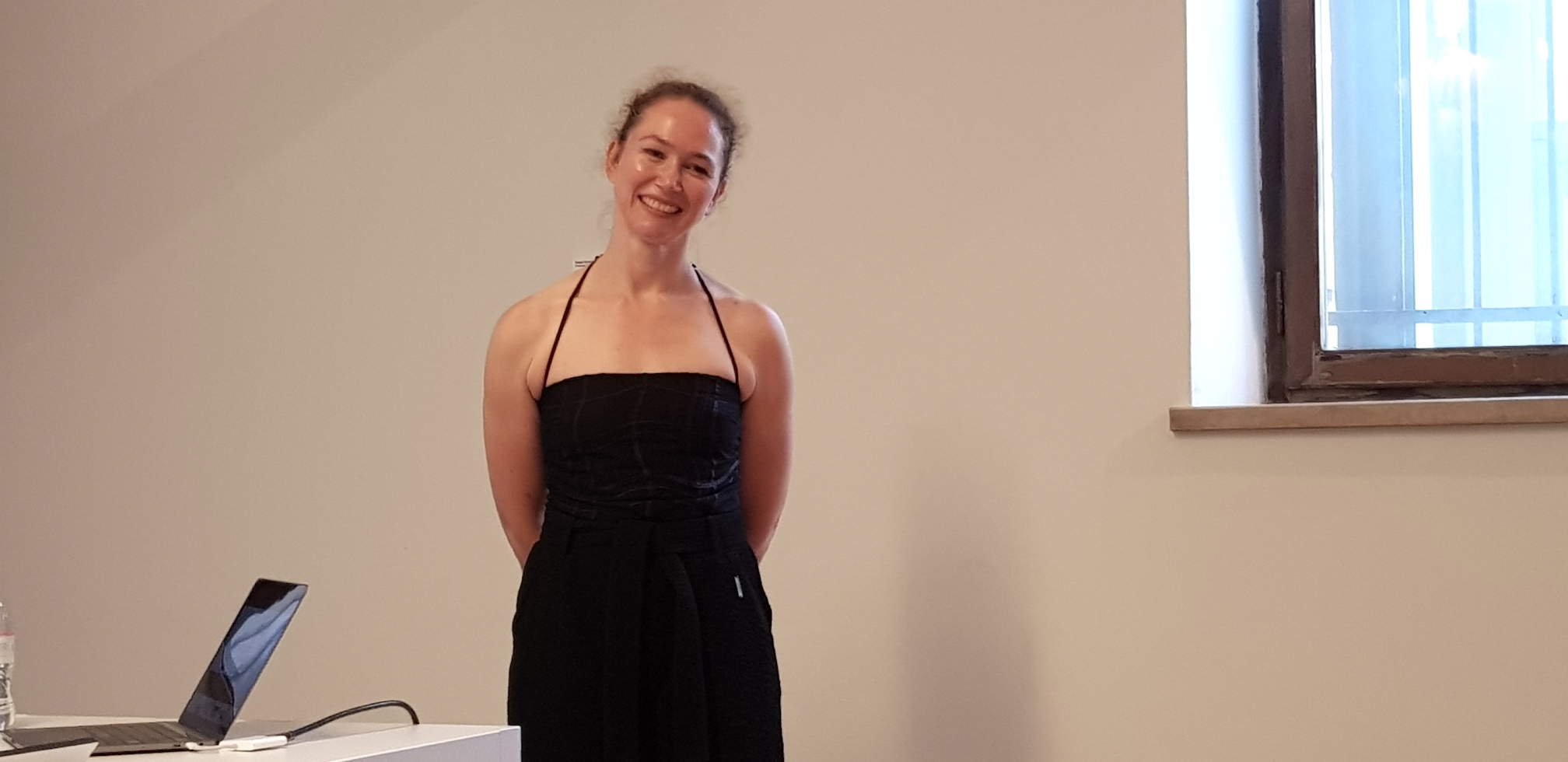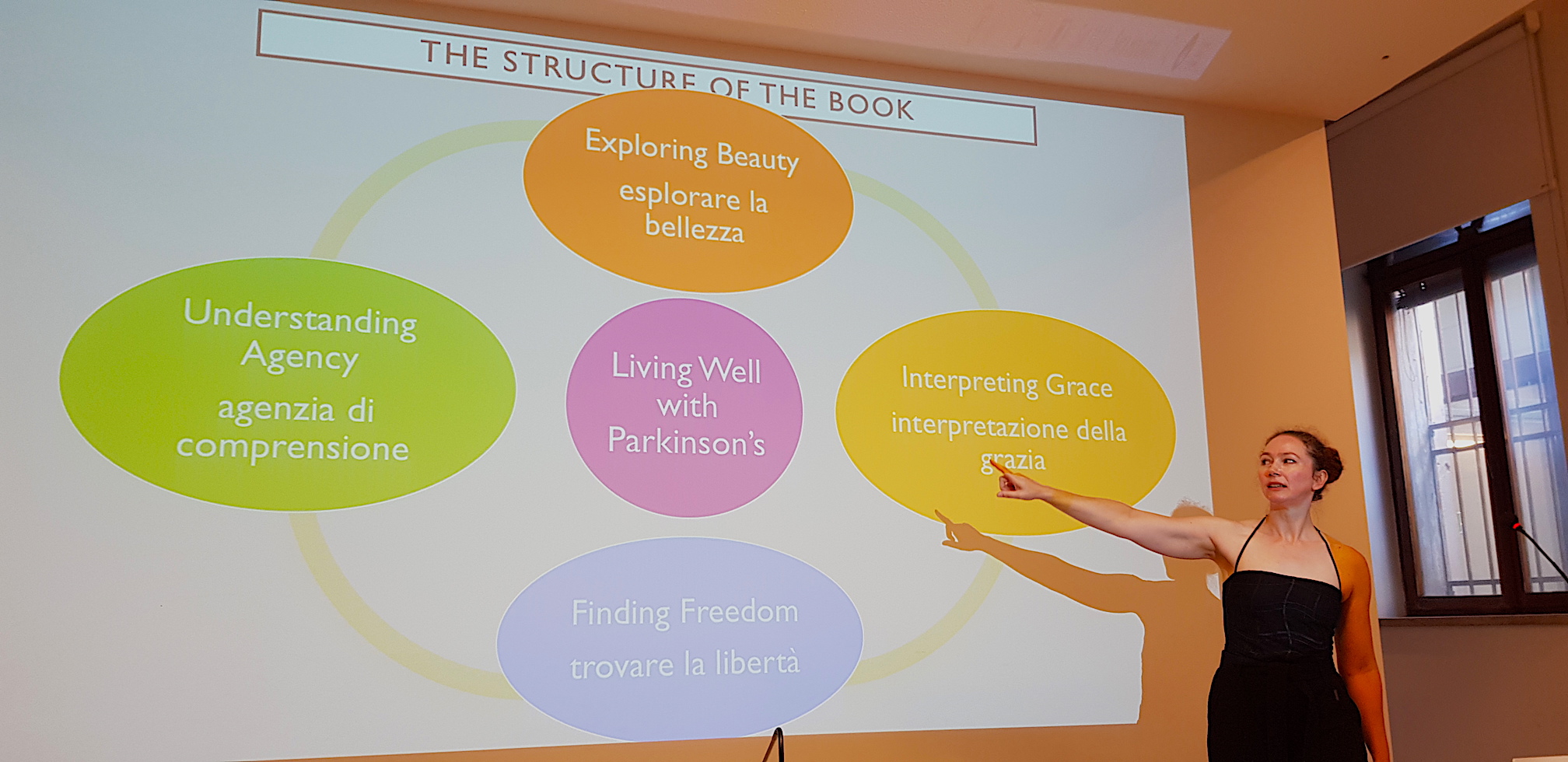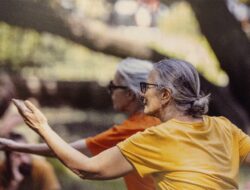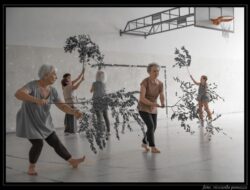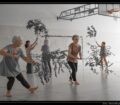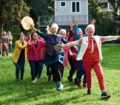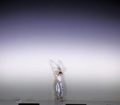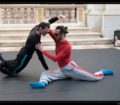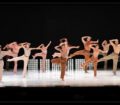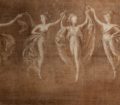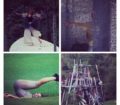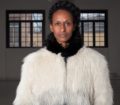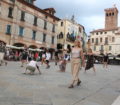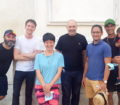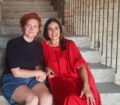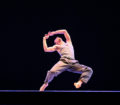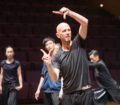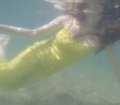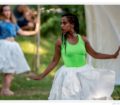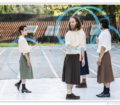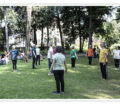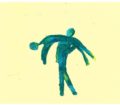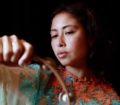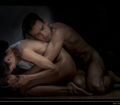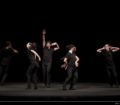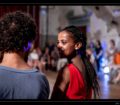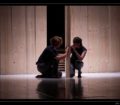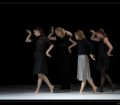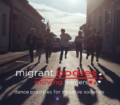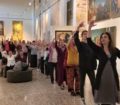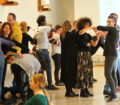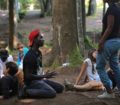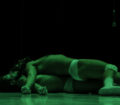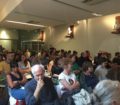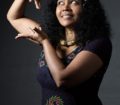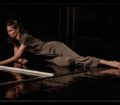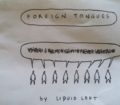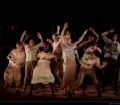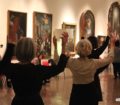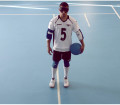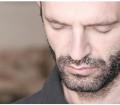La versione in italiano segue quella in inglese.
ENG|Sara Houston is Principal Lecturer in Dance Studies at the University of Roehampton, UK. Her main research focus is community dance for, with and by marginalised people and groups. For the last nine years Sara has been playing a lead role in researching dance and Parkinson’s internationally and this won her the BUPA Foundation Vitality for Life Prize in 2011. Her book Dancing with Parkinson’s – published by Intellect Books – has been celebrated in August at Musei Civici in Bassano del Grappa, during BMotion Danza 2019.
In this interview Sara Houston tells us about her research and how dance practices can be fundamental in helping people with Parkinson to live their lives better.
“My research began nine years ago, in 2010, in London. I received a phone call from an ex student of mine. She is working at English National Ballett and she said “Sara, we have just started a dance program, it is a twelve week pivot project for people with Parkinson. Would you like to evaluate it?” I said yes, I know nothing about Parkinson but I know a little bit about community dance and I can bring that knowledge!
Nine years later I know a little bit more about Parkinson and I know a little bit more about dancing. “Dance with Parkinson’s” is the outcome of that research.”
“This book is highly inspired and takes nourishment from the community of artists of Bassano. I think it’s important that this world premiere is celebrated here. I think that joy and that sharing of joy I found here through artistic practices has stayed with me during the writing of my book and it is what made Dancing with Parkinson’s so special and important.
When I started to follow the project by English National Ballet, my look was limited at the task I had. I had to evaluate the success of this practice. But soon after, I was kidnapped from what I watched and listened to being told by the participants. Someone started to speak about the “sense of changing” and the “sense of being different” during the practice, and this had more potential than just me evaluating the success or not of the project. I understood there was something truly interesting here, and I trusted the experience and the witness of the participants. After about one year I met Roberto Casarotto and Monica Gillette and thanks to their encouragement, the research has literally exploded, it became international.
After my involvement in the UK project, I participated in different classes all over the world. I spoke with people in India, south Arabia, Australia, Canada, America and in several European Countries. I met different ideas and approaches on how a dance class for people with Parkinson could be. My thoughts expanded and I realized that the one used was an artistic practice and not a therapy. I decided to focus my research starting from this point of view.
The artistic practice calls for an artistic medium-like dance. Therefore the attention is no longer on illness but on how to walk, on movement, on how we can express ourselves through movement, on the expressive potential of the body. Artistic practice can be therapeutic but this is not the goal. Dance artists are not therapists, they do not have a clinical preparation, but they can be an incredible resource also from a therapeutic point of view. For me it was fundamental to understand that I could explore artistic practices – physically and theoretically documented – that have something to say from the therapeutic point of view even if they are not forms of therapy.
Dance for people with Parkinson doesn’t necessarily make one feel better from the point of view of the disease, but it is fundamental in helping people to live their lives better.
When I started my research I interviewed a lady who invited me to her home for a tea and when I sat down, even before I asked her anything, she said to me: “Sara, this dance class has changed my life , of course it has improved my physicality, but the most important thing for me is that sense of feeling lovely.” A lot of time I listened to people say “I can flow better, I feel elegant, I feel graceful” or pointing someone of the participants saying “how wonderfully he was moving today, he flowed”. People realize that something magical is happening here.
Here people move differently from their everyday life, a difference that they have called grace. All this gives people a sense of dignity and a feeling of new freedom because they become more aware of their bodies, they can control their movements, they can take risks and abandon themselves to the experience by feeling free. For many of the people I met and listened to, this is a life-changing experience. This sense of change may not happen for everyone, it is not universal but it has great potential to become one.
There have been many and different emotions I have felt in these years, but the sense of joy shared during daily practice has been with me since the first day, and for as long as I wrote the book and made this book like so special and important. This research has become my passion. I have been, and still I am, in communication with so many people from all over the world! It is so exciting that yes, I really believe that this research has brought even more passion into my life.”
Rita Borga
ITA|Sara Houston è vice direttore del Dipartimento di Danza dell’Università di Roehampton (UK). Da sempre la sua ricerca si concentra sulla danza di comunità, in particolare sul coinvolgimento di persone e gruppi socialmente emarginati. Negli ultimi nove anni Sara Houston ha svolto un ruolo di primo piano a livello internazionale nella ricerca sulla danza per persone affette da Parkinson, tanto da aggiudicarsi il premio Vitality for Life della BUPA Foundation nel 2011. Il suo libro Dancing with Parkinson’s – pubblicato da Intellect Books – è stato presentato lo scorso agosto ai Musei Civici di Bassano del Grappa, durante Bmotion Danza 2019.
In questa intervista Sara Houston ci racconta la sua ricerca e come le pratiche di danza possono aiutare le persone con il Parkinson a vivere meglio la propria vita.
“La mia ricerca è iniziata 9 anni fa, nel 2010, a Londra. Ricevetti una telefonata da una mia ex studentessa che lavora per l’English National Ballett, mi disse che stava per partire un progetto pilota di danza per persone con Parkinson di dodici settimane e se volevo valutarlo. Ho accettato. Non sapevo niente di Parkinson ma sapevo qualcosa di danza di comunità e potevo portare questa conoscenza. Dopo nove anni ho imparato qualcosa di più sul Parkinson e di più sulla danza, e “Dance with Parkinson’s” è il risultato di questa ricerca.”
“La comunità artistica di Bassano ha profondamente ispirato e nutrito la mia ricerca. Sono contenta di poter presentare qui l’anteprima mondiale del mio libro. La gioia e il senso di condivisione della gioia che ho incontrato qui, durante le pratiche artistiche, mi hanno accompagnato durante tutta la stesura del mio libro ed è ciò che rende così speciale e importante Dancing with Parkinson’s.
Quando ho iniziato a seguire il progetto dell’English National Ballet, il mio sguardo nei confronti della danza per parkisoniani era limitato. Il mio compito era capire se questa pratica potesse avere o meno successo. Ma subito dopo sono stata rapita da quello che ho visto e ho sentito raccontare dai partecipanti. Qualcuno di loro ha iniziato a parlare della “sensazione di cambiamento” del “sentirsi differenti” durante la pratica, e questo era molto più significativo di qualsiasi altra valutazione che io potessi fare. Ho capito che c’era qualcosa di profondamente interessante dal punto di vista accademico, e mi sono affidata all’esperienza e alla testimonianze dei partecipanti. Dopo circa un anno ho incontrato Roberto Casarotto (direttore artistico di BMotion Danza e promotore del progetto bassanese Dance Well-movement research for Parkinson, ndr) e Monica Gillette (danzatrice e coreografa americana, ndr) grazie al loro incoraggiamento la ricerca è esplosa, ed è diventata internazionale.
Dopo il mio coinvolgimento in UK, ho partecipato a differenti classi in ogni parte del mondo. Ho parlato con persone in India, Arabia del sud, Australia, Canada, America e in diversi paesi europei. Ho incontrato idee e approcci diversi su come tenere una classe di danza per parkisoniani. Il mio pensiero si è ampliato e mi sono resa conto che quella utilizzata era una pratica artistica e non una terapia. Ho deciso di focalizzare la mia ricerca partendo da questo punto di vista.
La pratica artistica si affida a un medium artistico come può esserlo la danza, e quindi l’attenzione non è più sulla malattia ma per esempio su come si cammina, sul movimento, su come possiamo esprimere noi stessi attraverso il movimento, sul potenziale espressivo del corpo. La pratica artistica è terapeutica ma non è questo l’obiettivo. I dance artists non sono terapeuti, non hanno una preparazione clinica, ma sono un’ incredibile risorsa anche dal punto di vista terapeutico. Per me è stato fondamentale capire che potevo esplorare delle pratiche artistiche – documentate fisicamente e teoricamente – che hanno qualcosa da dire dal punto di visa terapeutico anche se non sono delle forme di terapia.
La danza per i parkisoniani non necessariamente fa sentire meglio dal punto di vista della malattia, ma è fondamentale nell’aiutare le persone a vivere meglio le proprie vite. Quando ho iniziato la mia ricerca ho intervistato una signora che mi ha invitato a casa sua per un tè e quando mi sono accomodata, ancora prima che le chiedessi qualcosa, lei mi ha detto: “Sara, questa classe di danza ha cambiato la mia vita, certo ha migliorato la mia fisicità, ma la cosa più importante per me e che mi fa sentire amabile.” Altre volte ho sentito dire dalle persone: “mi sento elegante, mi sento più fluida nei movimenti, aggraziata”; oppure indicando qualcuno dei partecipanti “oggi si muoveva in modo meraviglioso, veramente fluido”. Le persone si rendono conto che qualcosa di magico sta accadendo qui.
Qui le persone si muovono in modo differente rispetto alla loro quotidianità, e questa diversa fisicità viene chiamata grazia.
Tutto questo restituisce alle persone un senso di dignità e una sensazione di nuova libertà perché diventano più consapevoli del proprio corpo, possono controllare i propri movimenti, possono prendersi dei rischi e abbandonarsi all’esperienza sentendosi liberi. Per molte delle persone che ho incontrato e ascoltato, questa è un’esperienza che cambia la vita. Non tutti riescono a percepire questo senso di cambiamento, non è qualcosa di universale ma ha un grande potenziale per diventarlo.
Sono state tante e diverse le emozioni che ho provato in questi anni, ma il senso di gioia condivisa durante la pratica quotidiana è stata con me fin dal primo giorno, e per tutto il tempo in cui ho scritto il libro e ha reso questo libro così speciale e importante. Questa ricerca è diventata la mia passione. Sono stata, e lo sono tutt’ora, in comunicazione con così tanta gente da ogni parte del mondo! È così eccitante che sì, credo proprio che questa ricerca abbia portato ancora più passione nella mia vita.”
Rita Borga
Tags: Dance Well, Sara Houston

